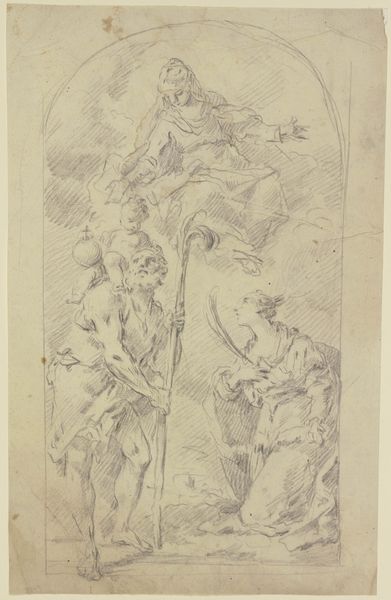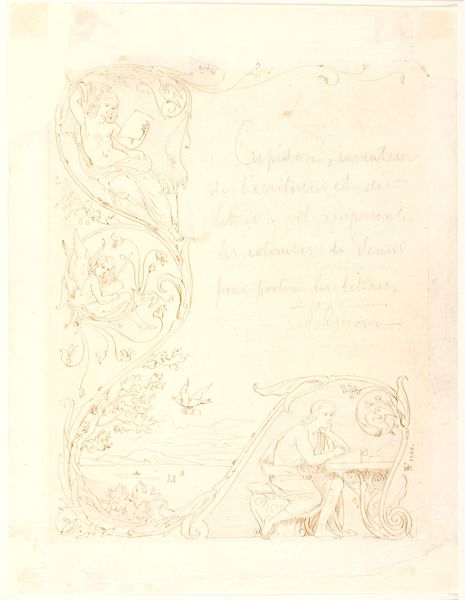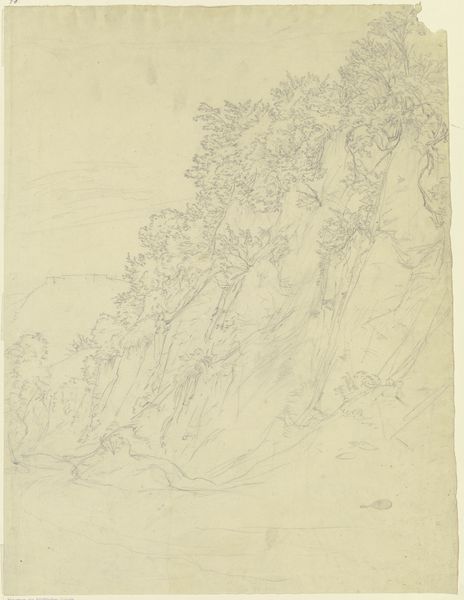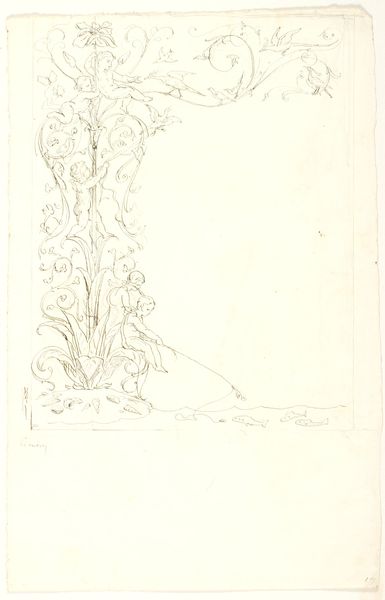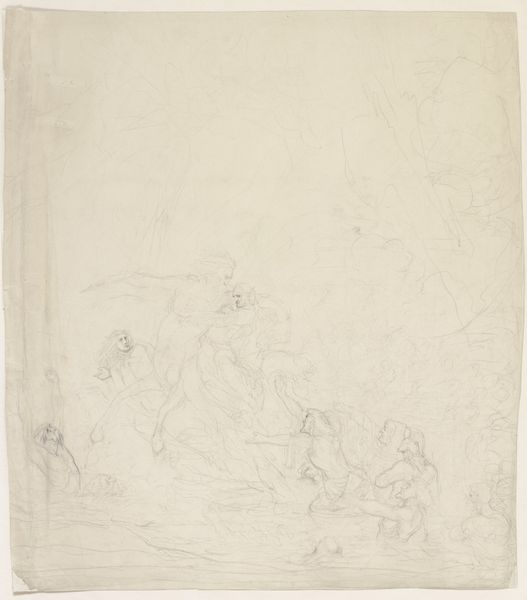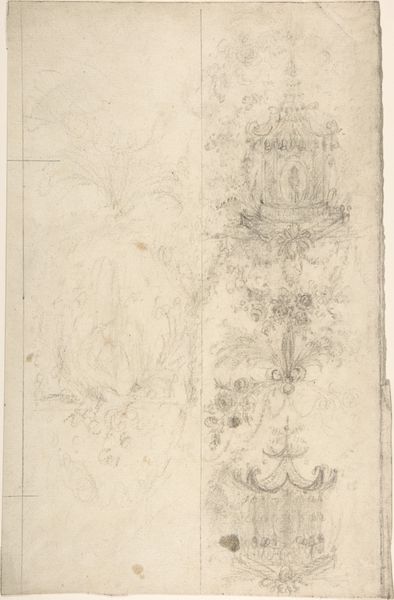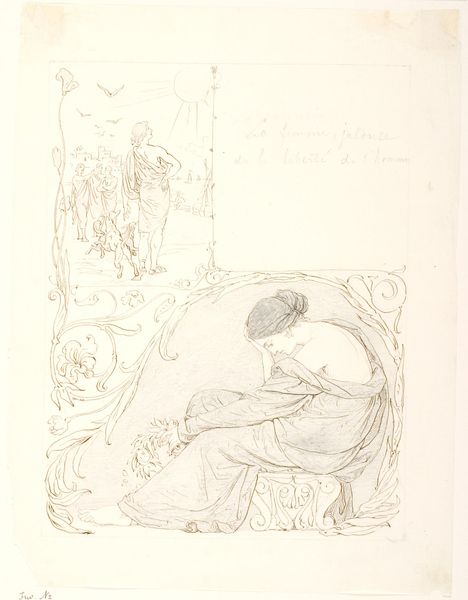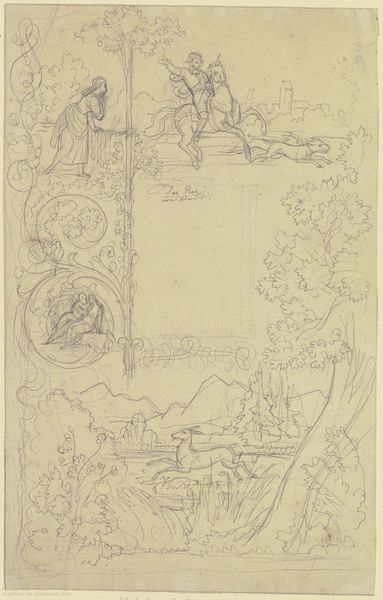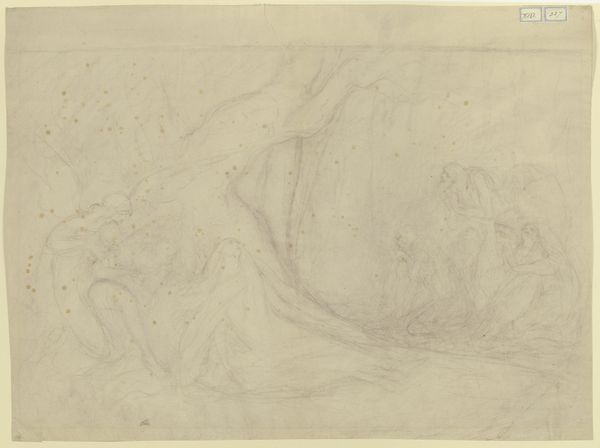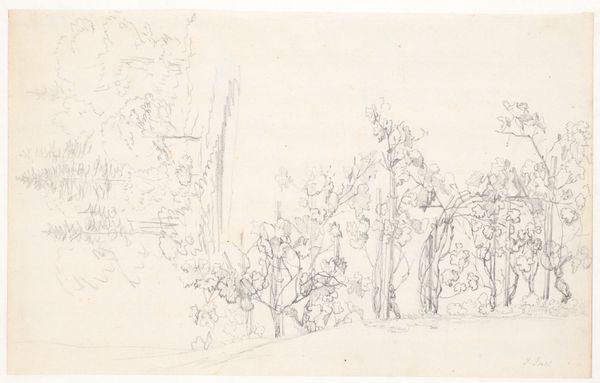
Nymferne finder Eros' sovende og forsøger at slukke Eros' fakkel 1860
0:00
0:00
drawing, ink
#
drawing
#
etching
#
figuration
#
ink
#
history-painting
#
academic-art
Dimensions: 254 mm (height) x 207 mm (width) (bladmaal)
Curator: Let's turn our attention to "Nymphs find the sleeping Eros and try to extinguish his torch" created in 1860 by Lorenz Frølich. It’s rendered in ink, showing a delicate, academic style. Editor: My immediate thought is that it feels fragile. The lightness of the drawing and the subtle gradations in ink give it a kind of ethereal quality, like a fleeting dream. There’s a vulnerability that resonates. Curator: Frølich was deeply invested in classical subjects. In its time, this drawing served not only as fine art but to reinforce existing concepts about love, beauty and the power of mythical figures. Editor: It also perpetuates specific aesthetic ideals about the female form. Looking at the figures, I see them represented through this really idealized gaze, with very slender, elongated bodies, embodying what I think would have been considered, and perhaps is still considered, beauty through a eurocentric and arguably very limited view. Curator: Absolutely. Consider the source material. Eros was often depicted in ways to convey a complex interplay of power and innocence and often, dangerous desires, and Frølich is inserting himself into that dialogue, making decisions based on both tradition and, potentially, his own interpretation. Editor: How interesting that we see the nymphs attempting to extinguish Eros's torch. Perhaps Frølich is speaking to love as something needing to be controlled or tempered? Or is it simply an exploration of their power, trying to suppress something they perceive as dangerous? I wonder, were nymphs always framed this way? Curator: In many narratives, yes, these are semi-divine figures, connected to nature, yet here they are acting against the very force they would, traditionally, embody: nature, fertility, love... Frølich is walking a tightrope of subversion and affirmation, echoing dominant discourses. Editor: I appreciate that art historical interpretation and research helps us uncover some context. Engaging with artworks is vital so we don't consume imagery passively; it really should be viewed with a critical eye. Curator: I think that by examining the image, its roots and potential reverberations, we give this image life. We can move it from the past to speak to our present in all of its beauty and limitations.
Comments
No comments
Be the first to comment and join the conversation on the ultimate creative platform.
